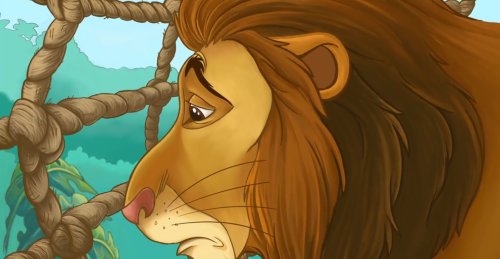
1. THE DIVERSITY OF LANGUAGES IN ZIMBABWE
A thread.......
There are many languages spoken in Zimbabwe. Of these, 16 are official - a world record. Other than Shona/Ndebele/English there are more languages spoken all over the country. This thread will focus on those.
A thread.......
There are many languages spoken in Zimbabwe. Of these, 16 are official - a world record. Other than Shona/Ndebele/English there are more languages spoken all over the country. This thread will focus on those.

2. Barwe - mainly spoken in the Nyamaropa & Nyakombu districts in Nyanga as well as in the Mazezuru & Mukosa areas of Mudzi.
3. Chewa/Nyanja - mainly spoken in mining & farming towns. In Harare they are concentrated in Mufakose, Mabvuku & Tafara. In Bulawayo they are concentrated in Sizinda, Matshobana, Makhokhoba, Njube, Tshabalala & Luveve. The Chewa came as migrant workers from Malawi & Zambia.
4. Chikunda- mainly spoken in the lower Guruve (Kanyemba & Chikata) & Muzarabani districts.
5. Doma- mainly spoken in the Chiramba, Koranzi, Chiyambo, Mugoranapanja & Kuhwe areas of the Guruve districts.
6. Xhosa- mainly spoken in the Mbembesi area near Bulawayo, Fort Rixon, Goromonzi (in Chief Rusike's area), Msengezi, Marirangwe & Gwatemba. The Xhosa came with Cecil Rhodes when he moved from Cape Town to Bulawayo & worked as cooks, drivers etc.
7. Kalanga - mainly spoken in Bulilima & Mangwe districts, Nyamandlovu, Kezi, Tsholotsho & Matobo districts.
8. Nambya - mainly spoken in Hwange, Tsholotsho & western Lupane. It is closely related to the Kalanga language.
9. Hwesa- mainly spoken in the northern part of Nyanga district.
10. Shangani/Tsonga - mainly spoken in Chiredzi district, Beitbridge ( Chikwalakwala), Mwenezi (in Chief Chitanga's area), Zaka (in Chiefs Tshovani & Mutshiphisi's areas), Mberengwa & Chipinge (in Gonarezhou). It's related to the Shangani/Tsonga of South Africa.
11. Sotho - mainly spoken in Gwanda South (around Manama), Gwanda North(in Chief Nhlamba's area), Bulilimamangwe, Beitbridge, Shashe, Muchuchuta, Masera, Siyoka, Kezi & Masema (in the Masvingo district). The Sotho are originally from South Africa.
12. Tonga- spoken in Binga, Lupane northwest /west, Hwange, Chirundu(Kariba, Nyaminyami & Omay districts), Gokwe South (Simchembu & Nenyunga, Mount Darwin & Mudzi (Goronga, Mukota & Dendera).It is related to the Tonga spoken in Zambia.
13. Tswana - spoken in Bulilimamangwe district & Mphoengs(between Ramakgoebana & Simukwe rivers). Batswana came with Mzilikazi to the Zimbabwe plateau. Some Nswazi people who fled to Zim in 1947 after a clashes with Tshekedi Khama voluntarily returned to Botswana in 2006.
14. Khoisan/Tshwawo- mainly spoken in Tsholotsho (Maganwini, Sinkente, Phumula & Dombo Masili) & Bulilimamangwe's area of Siwowo. These are the original inhabitants of the Zimbabwe plateau. They are related to the Basarwa of Botswana.
15. Venda - mainly spoken in Beitbridge. It is related to Venda spoken in South Africa.
16. Sena-mostly spoken in Muzarabani in plantations like Katiyo Tea Estate & other commercial farms & mines. The Sena originally are from Mozambique. They came as migrant workers before independence & others came during the liberation & post independence civil war in Mozambique.
17. Ndau - is mainly spoken in eastern Zimbabwe, south of Chipinge and Chimanimani. It is also spoken in the Zambezi valley, in central Mozambique all the way to the coast & in central Malawi. Ndau is distinct from Shona dialects & Ndau ancestry has Nguni influence.
SOURCES :
-Section 6 of the Zimbabwe Constitution.
-A survey of minority languages in Zimbabwe : S. J Hachipola (1998), University of Zimbabwe publications.
-The historical & politico-cultural significance of Nswazwi Mall in Francistown : Boga Thura Manatsha
-Section 6 of the Zimbabwe Constitution.
-A survey of minority languages in Zimbabwe : S. J Hachipola (1998), University of Zimbabwe publications.
-The historical & politico-cultural significance of Nswazwi Mall in Francistown : Boga Thura Manatsha

18. After thought : The Kalanga spoken in Zimbabwe is related to the Kalanga spoken in Botswana.
• • •
Missing some Tweet in this thread? You can try to
force a refresh

















